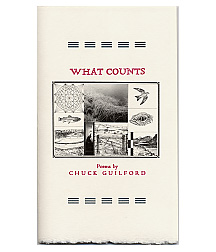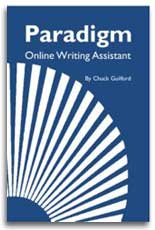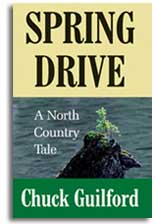A quilt maker looks at scraps of cast-off fabric strewn about the attic floor and sees a design. Something—some juxtaposition of red beside lavender, some connection of past and present, facts and memories—triggers an impulse, starts an intuitive process. The quilt is both many and one—many individual pieces and one single object.
An artist looks at a shoelace, a matchbook, a speeding ticket, and sees a collage, connections that ask to be made, a statement that wants to emerge.
Seemingly disconnected thoughts and images, can be juxtaposed, lifted out of their original contexts and reassembled into a new whole—a single statement.
In writing, a similar process can happen. Seemingly disconnected thoughts and images, facts and memories, can be juxtaposed, lifted out of their original contexts and reassembled into a new whole—a single statement. Ezra Pound wrote poetry this way. He called his Cantos a "ragbag" stuffed with bits and scraps of whatever he found that seemed to belong there. The final effect is a sort of verbal montage—slow fade, voiceover, wide pan, jump cut, close up.
You might begin with a series of quick freewrites, collect notes and quotations at random, then save them under different filenames, print them out, scatter them around the floor, cut them up and tape them back together. You could look for tension and contrast in language, recurring themes, emerging patterns of meaning. Then you could merge it all back into a single document and continue to cut, paste, and move. There's no "right" way to do it, no list of steps to follow.
If you want to push your essays beyond rational, linear thinking, you may want to assemble a montage. The process is intuitive and holistic. It requires imagination, improvisation, and a willingness to experiment.
Activity
5.6 Assemble a one-page montage containing at least four of the following: A snatch of overheard conversation A quote from the daily newspaper A fact from The World Almanac Some of your own freewriting An advertising slogan A few lines from a song Experiment with different sequences and juxtapositions until you see a pattern emerging. Then work with the pattern, cutting and pasting, adding and deleting, until you're satisfied with the result.




